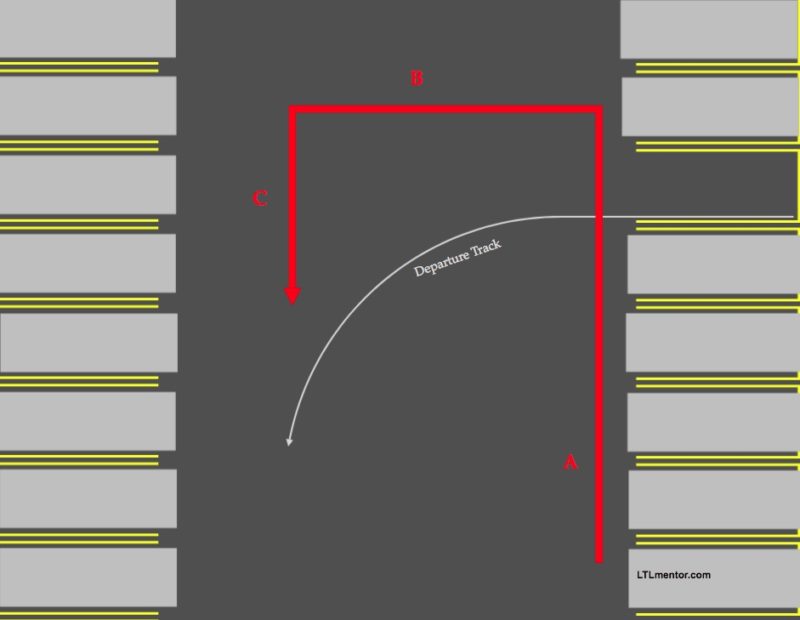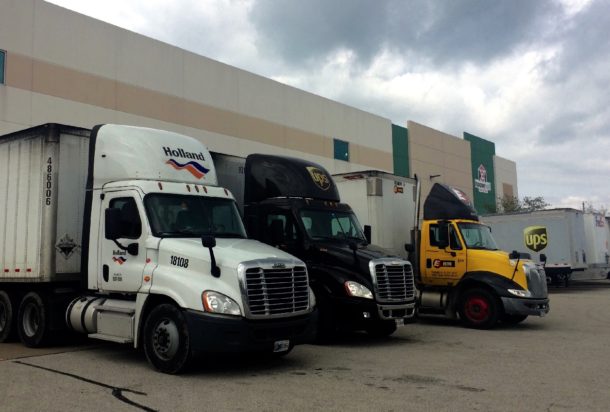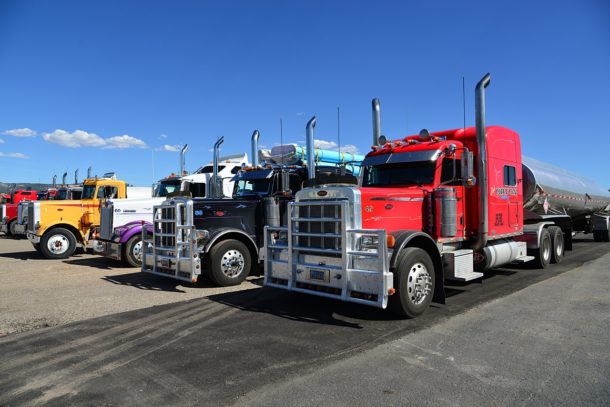How to avoid reversing your trailer to the blindside
The Hangman setup route will let you turn a potential blindside into an easy sight side. For those who may not know, a blindside is when you set up to back into a target space on your passenger side. With the tractor offset towards the passenger side, you will not have the luxury of looking out the window and seeing the length of the trailer.
The Hangman setup quickly becomes a favorite of many trainees because it’s relatively easy to execute and allows them to experience early backing success.
And every successful backing attempt builds confidence.
I’ll go over the crucial details of this route, show you how you might mess things up, and what to look for in your finish position.
Then I’ll show you an example of this in action.
If you haven’t already, I’d appreciate it if you hit that like and subscribe button. Thank You in advance for that.
I call this the Hangman setup because the shape resembles the gallows in the paper and pencil word guessing game I played as a kid.
Warning: A setup area wide enough to perform a U-turn is needed to perform the Hangman setup.
Before attempting this setup, make sure you have enough room. Or you could get yourself stuck. I can’t tell you precisely what constitutes wide enough and what doesn’t.
You will have to gain a feel for that, so make sure you have plenty of room the first time you try it. Then, after doing it a couple of times, you will get a better sense of how much space you need.
For example, I know I can perform one here in a day cab. However, if a tractor were in one of these spaces directly across from my target space, I wouldn’t attempt it.
Nor would I attempt it here if I were driving a long-nosed tractor.
Be sure to pay close attention to detail when you look at this diagram. If you ignore the details, it won’t work out.
This red line is the path traced out by the tractor.

And it matters where these turns take place and the direction of travel.
Notice that Leg A runs parallel to the target space and takes place relatively close, not 10 feet out in the aisle.
The turn from leg A to leg B happens just past the target space. Not at the target space, short of the target space, or way past the target space.
The goal is to get the tractor and trailer to end up in this position. The trailer will pretty much back itself into the target space from here.
If I ignore these details during the setup, the trailer tires will end up somewhere else, and then it becomes more challenging. I want my tandems as close as possible to this imagined curved path on the ground.
One of my secrets to avoiding pull-ups is getting the tandems on this curved path.
Back to the details, I turn from Leg A to Leg B just past the target space. If I were in a sleeper cab, I’d pull up a little further to allow for the extra tractor length.
Notice that the overall shape of this route is not a big circle. Instead, I make a rounded rectangle. This rectangular path makes the best use of available space and will help prevent an accidental jack-knife. It’s also the shape I trace out when making a U-turn.
When to make the turn from Leg B to Leg C?
Do you notice anything different between leg A and leg C?
Unlike Leg A, which runs close to the spaces along the passenger side, Leg C is further away on this side. This cushion of space is critical.
When I turn the steering wheel sharply to follow the trailer, my front end will swing outwards.
Clipping the front bumper on the passenger side is a common accident with new truck drivers.
After turning from Leg B to Leg C, I straighten the wheel, ensuring that my tractor is facing parallel to the trailers on that side.
Now, I have my window down and watch my trailer closely.
I’m looking at two things mainly. Where my tandems are on the ground and the direction my trailer is pointing. Looking at the back of the trailer while ignoring these two things is pointless.
I’ll pick out a spot at the mouth of the target space where I want my driver’s side tire to roll over. If there’s a yellow line, I’ll use the inside as my Tire Target.
I imagine a curved line starting at this target and extending back towards me along the ground. There’s a little margin for error here, but I want my tandems in this general area when I finish my setup.
The other thing I look for is my trailer pointing at the neighboring space on the passenger side.
There’s a good reason for this.
Notice in this offset position that my tractor is pushing against the side of the kingpin.
Getting my tractor back to the front of the trailer will take a few seconds.
During this time, my trailer will rotate a little and point somewhere else.
So, I’m allowing for that rotation.
The good thing about this setup is that I can start chasing immediately. It will usually go right into the hole with minimal front corner adjustment.
Give this setup a try, and let us know how it went in the comments.
Be safe out there.
For more help with backing check out this playlist on my YouTube channel:
https://www.youtube.com/advancedtruckbacking.com
related articles:



